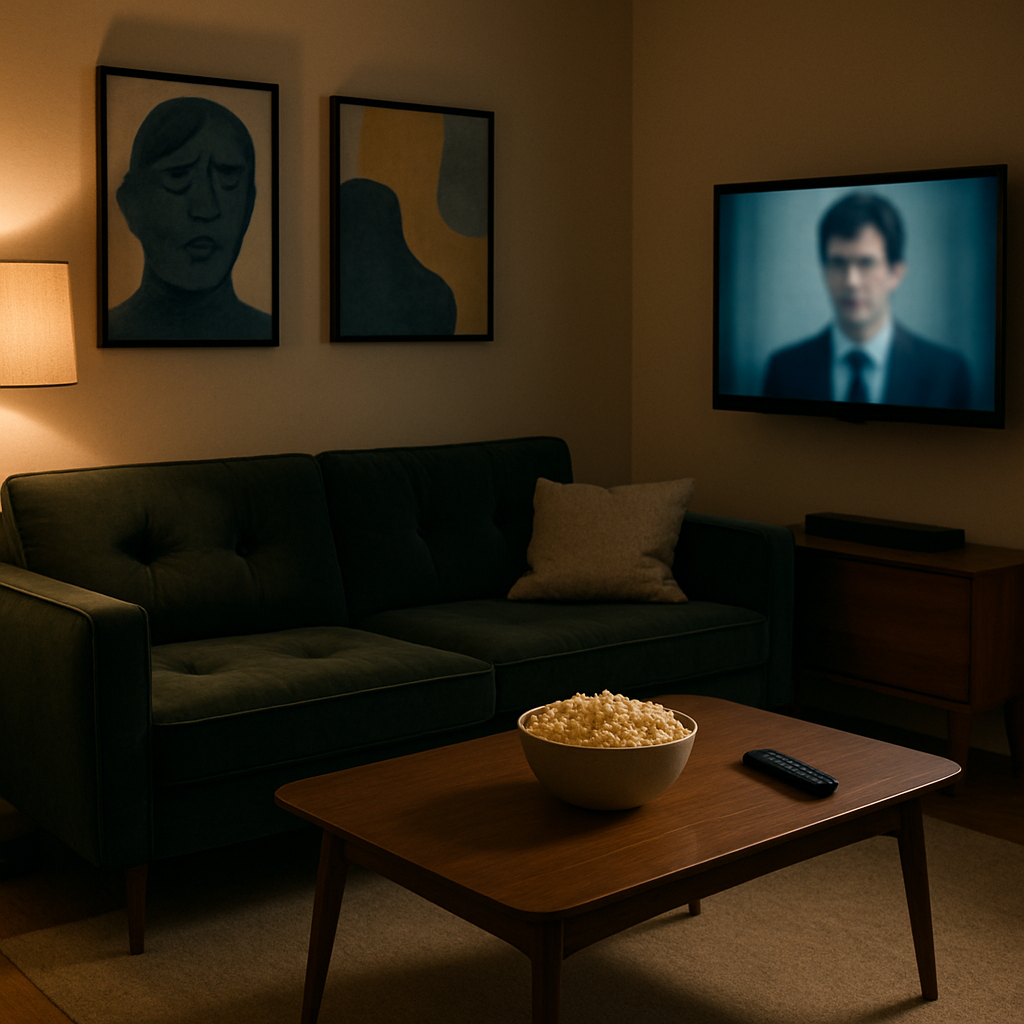The Hidden Psychology Behind Our Favorite TV Shows

Ever wonder why you can’t stop watching certain TV shows, even when logic tells you to turn off the screen and go to bed? The answer lies deeper than just good writing or charismatic actors. Television series tap into fundamental psychological principles that hook our brains and keep us coming back for more.
Television writers and producers aren’t just storytellers they’re amateur psychologists who have mastered the art of manipulating our emotions, triggering our cognitive biases, and exploiting our social instincts. From the cliffhangers that keep us binging to the parasocial relationships we form with fictional characters, our favorite shows are carefully crafted psychological experiences.
The science behind our TV obsessions reveals as much about human nature as it does about entertainment. The most successful shows don’t just happen to be addictive they’re designed that way, using psychological triggers that have evolved over decades of television production.
The Psychology of Character Attachment
We form surprisingly intense bonds with TV characters. I still remember feeling genuinely sad when Michael Scott left “The Office” or the emotional gut-punch of watching Jesse Pinkman’s journey in “Breaking Bad.” These reactions aren’t accidental they’re the result of psychological mechanisms that TV creators deliberately activate.
Our brains process fictional characters using many of the same neural pathways we use for real relationships. Research from Ohio State University found that viewers experience “narrative transportation” a psychological state where we mentally enter the world of the story. During this state, our brain chemistry actually changes, releasing oxytocin (the bonding hormone) when we connect with characters.
This explains why we develop what psychologists call “parasocial relationships” one-sided attachments to people who don’t know we exist. These connections feel surprisingly real. Think about how you might refer to characters in your favorite shows by their first names, discuss their decisions with friends, or even talk to the screen during intense moments.
Character consistency plays a crucial role in these attachments. We’re drawn to characters whose behavior follows understandable patterns even if those patterns are flawed. Walter White’s transformation in “Breaking Bad” works because each step in his moral decline makes psychological sense within the character’s established mindset and circumstances.
TV shows also leverage our innate tendency for social comparison. We subconsciously measure ourselves against characters, which explains why seeing characters overcome challenges similar to our own can feel so satisfying. This is why relatable protagonists with clear flaws often generate stronger viewer attachment than perfect heroes.
The most effective character development occurs when shows present complex moral landscapes. Characters in shows like “The Sopranos” or “Mad Men” do terrible things yet remain sympathetic because we understand their motivations. This moral ambiguity activates parts of our brain associated with ethical reasoning and personal reflection, creating deeper engagement than straightforward good-versus-evil narratives.
Narrative Hooks and Cognitive Manipulation
Television writers have perfected techniques that exploit specific quirks in human cognition. The “Zeigarnik effect” our tendency to remember uncompleted tasks better than completed ones explains why cliffhangers work so effectively. When an episode ends without resolution, our brains keep processing the narrative, creating a psychological itch that can only be scratched by watching the next episode.
I experienced this firsthand during the height of “Lost” mania. Each episode’s mysterious ending had me theorizing all week about what might happen next. The show’s writers understood that unresolved questions create cognitive tension that viewers find both uncomfortable and irresistible.
Streaming platforms have weaponized this effect through auto-play features and season drops that enable binge-watching. Netflix’s internal data revealed that viewers who watch an entire season within 24 hours often report higher satisfaction not necessarily because the content is better, but because continuous viewing creates a more immersive psychological experience with fewer opportunities for critical evaluation.
Shows also exploit the “peak-end rule” our tendency to judge experiences based primarily on their most intense moment and how they end. This explains why many episodes place their most emotional scenes near the conclusion, and why season finales often contain the most dramatic developments. Our brains will remember these moments more vividly than the rest of the content, coloring our overall impression of the show.
Procedural dramas like “CSI” or “Law & Order” tap into our brain’s love of pattern recognition and problem-solving. These shows present puzzles that our minds automatically try to solve, releasing small doses of dopamine when we successfully predict outcomes. This cognitive engagement creates a sense of participation that passive viewing doesn’t offer.
Some psychological techniques work below our conscious awareness. The “mere exposure effect” our tendency to develop preferences for things simply because they’re familiar explains why recurring catchphrases, settings, and character behaviors become increasingly satisfying over time. The comfort of predictability within the framework of novelty creates an optimal level of cognitive stimulation.
A fascinating example comes from “The Office,” where Jim’s glances at the camera became a beloved running gag. Initially just a storytelling device, these moments evolved into a psychological trigger that created anticipation and satisfaction when deployed at key moments. By the final seasons, a single camera look could convey complex emotions precisely because our brains had been conditioned to interpret them.
Reality TV employs particularly aggressive psychological techniques. Shows like “The Bachelor” deliberately create environments that maximize stress and emotional volatility, knowing that heightened emotions lead to more compelling television. Contestants’ erratic behavior often results from sleep deprivation, social isolation, and manipulated social dynamics psychological pressures deliberately introduced by producers.
The most sophisticated shows layer these cognitive hooks, creating multiple engagement pathways. “Game of Thrones” simultaneously activated our problem-solving instincts (predicting political maneuvers), emotional attachment (character relationships), and narrative curiosity (mysterious elements like White Walkers). This multi-channel engagement explains why the cultural conversation around the show became so intense it stimulated various psychological responses simultaneously.
Cultural Reflection and Identity Formation
TV shows don’t just entertain us they help us process social realities and form aspects of our identities. Popular shows often function as cultural processing centers where society works through complex issues in simplified, narrative forms.
Shows like “Black Mirror” tap into collective anxieties about technology, while “The Handmaid’s Tale” processes fears about gender politics. These narratives provide psychological frameworks that help viewers organize their thoughts about complex social issues. By presenting extreme versions of real-world concerns, they create emotional distance that allows for safer psychological processing.
Our show preferences also serve as identity markers. Telling someone you love “Succession” signals different personality traits and values than saying you’re a “Ted Lasso” fan. Research from the University of Texas found that people often choose media that reinforces their existing self-concept or represents aspirational identities they’d like to embody.
TV fandoms provide powerful social belonging a psychological need as fundamental as food or shelter. Being part of a community that shares your passion for a show creates in-group bonds that satisfy our evolutionary need for tribal connection. This explains the emotional investment many viewers have in defending their favorite shows from criticism.
The phenomenon of “comfort viewing” rewatching familiar shows during times of stress reflects how television serves as emotional regulation. A 2020 study found that during the early pandemic lockdowns, viewers disproportionately returned to familiar content rather than exploring new shows. Psychologically, this makes perfect sense: familiar narratives require less cognitive processing and create a sense of control when the outside world feels chaotic.
I’ve personally found myself returning to “Parks and Recreation” during stressful periods. The show’s optimistic worldview and predictable character dynamics create a psychological safe space a form of emotional self-medication through media consumption.
The most psychologically powerful shows create what psychologists call “narrative identity” stories we tell ourselves about who we are. When viewers say “That show changed my life,” they’re describing a narrative that became incorporated into their self-concept. This explains why representation matters so deeply in television seeing characters who share your identity validates your existence in profound psychological ways.
TV shows reflect our psychological reality while simultaneously shaping it. They’re mirrors and molds showing us who we are while influencing who we become. This bidirectional relationship between media and mind makes television a uniquely powerful psychological force in modern life.
The next time you find yourself staying up too late to watch “just one more episode,” remember that you’re not just enjoying a story you’re participating in a sophisticated psychological experience designed to engage your mind at multiple levels. Our favorite shows aren’t just entertainment; they’re complex interactions between creative psychology and human cognition, revealing as much about our minds as they do about the stories they tell.


